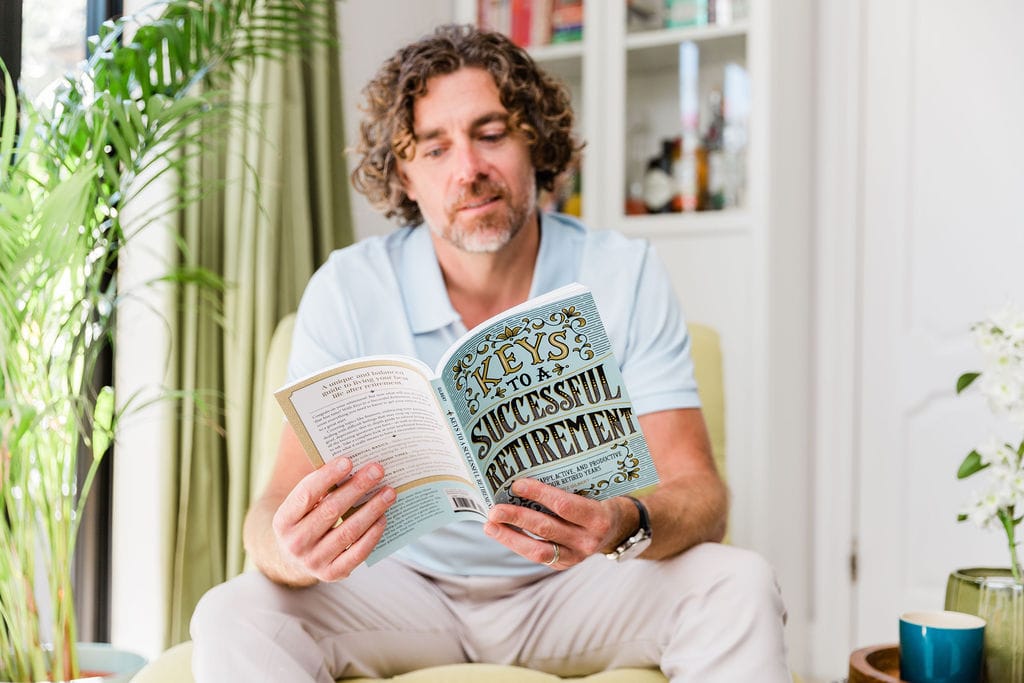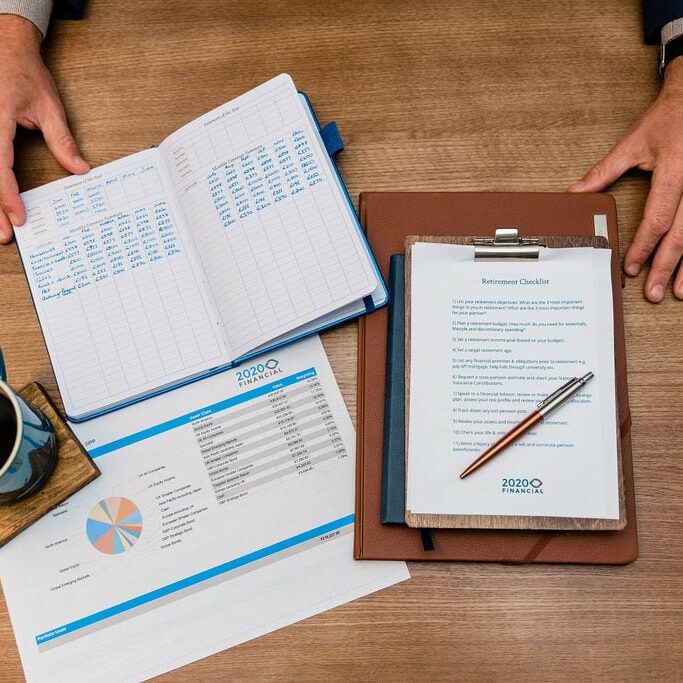A huge amount of retirement planning is based around saving for retirement, building that all-important pension point and then, eventually, working out how much is safe to draw down from your pension. So far so good, right?
While these are all crucial elements of your retirement planning, they miss out on one very important component: your lifestyle. Your dream retirement isn’t something that just happens. It requires meticulous planning to make sure that you don’t unintentionally fall into a lifestyle that you don’t want.
If you want to create the retirement you want, you have to give some thought to Lifestyle Planning.
RELATED: HOW TO START PLANNING FOR RETIREMENT
What is Lifestyle Planning for retirement?
Lifestyle planning brings the human element to financial planning and it’s essential for a comfortable retirement. It’s a proven way of making your money work for you, to support the life you want to lead.
And this matters. Those hopes, needs and goals for your golden years? You’re going to struggle to make them a reality if you haven’t put your vision for the future front and centre when planning your finances. Which is precisely what lifestyle planning is.
Lifestyle planning looks at the small but mighty things that contribute to your version of a comfortable lifestyle and maps them out within your financial forecasting and goals. It takes into account both your current lifestyle requirements and your desired future lifestyle to help you create the retirement you want, whilst enjoying life now.

What sort of Retirement do you want?
“How we spend our days is of course how we spend our lives. What we do with this hour and that one is what we are doing.”
Annie Dillard
It’s easy to focus purely on the big, extravagant things you want to do in retirement – those once in a lifetime trips, finally buying the house of your dreams, exploring the world on lavish trips. But what about the day to day, run of the mill activities? The ones that actually create our overall lifestyle?
Lifestyle planning starts with deciding what sort of retirement you want; and this can only be found through identifying the smaller things. When you picture a typical day in retirement, what does it look like? This is the image that you need to produce through your financial planning.
Once you know what sort of lifestyle you want – and what will truly make you happy in later life – you can start to add in your corresponding financial goals and reverse engineer your planning from there.
But where do you begin? Keep it simple – how will you spend your days in retirement? Perhaps your goals include:
- Playing golf
- Lunching and meeting friends for coffee
- Spoiling the grandchildren
- Living abroad
- Frequent travel
- Owning a dog
- Regular yoga classes
- Upgrading your car and taking road trips
Of course, this list is by no means exhaustive. Spend some time thinking about the activities, items and experiences that you want to fill your days come retirement. And then, figure out what you need to do to make them happen.

Essential Lifestyle planning for retirement
Lifestyle planning is essential for all types of financial planning, but it is especially vital for retirement since you need to plan and save adequately ahead of time for the life you want to have.
Unsurprisingly, this makes things a bit trickier. Let’s say you want to buy a new house within four years but you aren’t quite bringing in the money to make it possible. There are many ways to increase your income – you can change jobs or go for a promotion, for starters. This isn’t an option once you get to retirement age. This means you need to put in the work and planning now so that you can live the retirement you desire all those years in the future.
The good news is that most of us have a pretty good idea of how we like to spend our free time. We understand what would constitute a happy, fulfilled lifestyle and so it shouldn’t be too hard to create a lifestyle plan for retirement. Consequently, you can use your current preferences to guide you.
- What are your non-negotiables for your lifestyle?
Remember that this is different for everyone. You may see a high-end car as your number one priority in retirement. Or perhaps it’s owning a dog or having a golf membership. Maybe your non-negotiables are big. Maybe they’re actually quite small. Outline your must-haves (and keep in mind that these are separate to your ‘nice to haves’).
- Where will you live?
This is often overlooked, but don’t forget that your retirement location will contribute to your overall cost of living. Do you want to live close to family or do you want to move to a dream location? How will this affect your financial situation? Will it cost you more than what you are currently paying?
- What things must you absolutely have or be able to keep doing?
These are your ‘nice to have’ activities – and they matter! Take a look at the way you spend your time right now and ask yourself: which of these things do I want to keep hold of in retirement? This could be anything from yoga to dinner with friends, and regular massages to the latest road bike. Make a note of how much these things cost – both as one-off costs and regular dents in your pension pot.
- What is your minimum acceptable standard of living?
Another factor that is totally unique to the individual as we all have different standards of living. Your minimum acceptable standard of living could consist of shopping at Waitrose or Marks and Spencers. Alternatively, it could include wine with dinner or a weekly dance class. Maybe you need three holidays a year? Maybe you need ten?
- How will you spend your mornings, afternoons, evenings and weekends?
Many people fall into the trap of only planning for a typical day as a whole – but don’t forget that different times of the day, week and year all call for different needs and wants. Something we find valuable is breaking up your lifestyle planning into mornings, afternoons, evenings and weekends. How would you love to spend that time?
All of this information will help you formulate financial figures and goals – chances are this will rest above your state pension, and so you will need to top it up. Always remember to discuss this with a partner if you are in a couple: after all, your money will need to provide for both of you.
How to start your lifestyle plan
One way to start your lifestyle plan is to keep a journal of the ways you currently enjoy spending your downtime. Not your major, megawatt dreams – your typical, day to day experiences.
Ask yourself:
- What activities do you enjoy doing at the weekend?
- What do you wish you had more time for?
- Is there anything you’re not currently doing that you’d love to start when you have more time?
- What do you like to do by yourself?
- If you have a partner, what do you like to do together?
- What do you like to do for family and friends?
Next, put your ideas down on post-it notes and stick them to an A2 board: from here, you can start to put them into a weekly plan. Plot the activities out day by day, morning by afternoon by evening. You could even try out your ‘dream retirement lifestyle’ before you retire to see if you like it in practice.
Once you have a firm idea of what you want your lifestyle to look like in retirement, it’s time to join the dots by speaking to an independent financial advisor.
Fancy getting the conversation started? Give a member of our team a call for a free, impartial chat.

Lifestyle Financial Planning
Now you know how you want to live, you can start to plan what you need to do to get there: enter lifestyle financial planning. Here you must put a realistic figure next to your non-negotiable retirement plans and speak to your financial advisor about your income requirements.
The earlier you kick off this process, the better, as your financial advisor will be able to tell you whether your existing savings and investments will be adequate for your required income level. If not, they can help you work out a plan to get you there or help you set a more realistic plan for your future. To do this, they will look at your current circumstances and your dreams for retirement and find a way that the two can happily co-exist.
This process will include careful consideration of your pension plan (and any changes you need to make), an assessment of your savings and investments as well as any other sources of income. In addition, they will explore legacy planning and make sure that everything you are doing is as tax efficient as possible.
Ultimately, it’s their job to get you from where you are now to where you want to be, without compromising on your life at this moment.
RELATED: 14 REASONS WHY YOU NEED A FINANCIAL ADVISOR
Here at 2020 Financial, we are experts when it comes to setting you up for success in later life. Our advice is 100% impartial and our goal is to work with you to create a financial future that feels exciting.
To find out more, get in touch for a free consultation with a member of our team. We’d love to hear from you.



